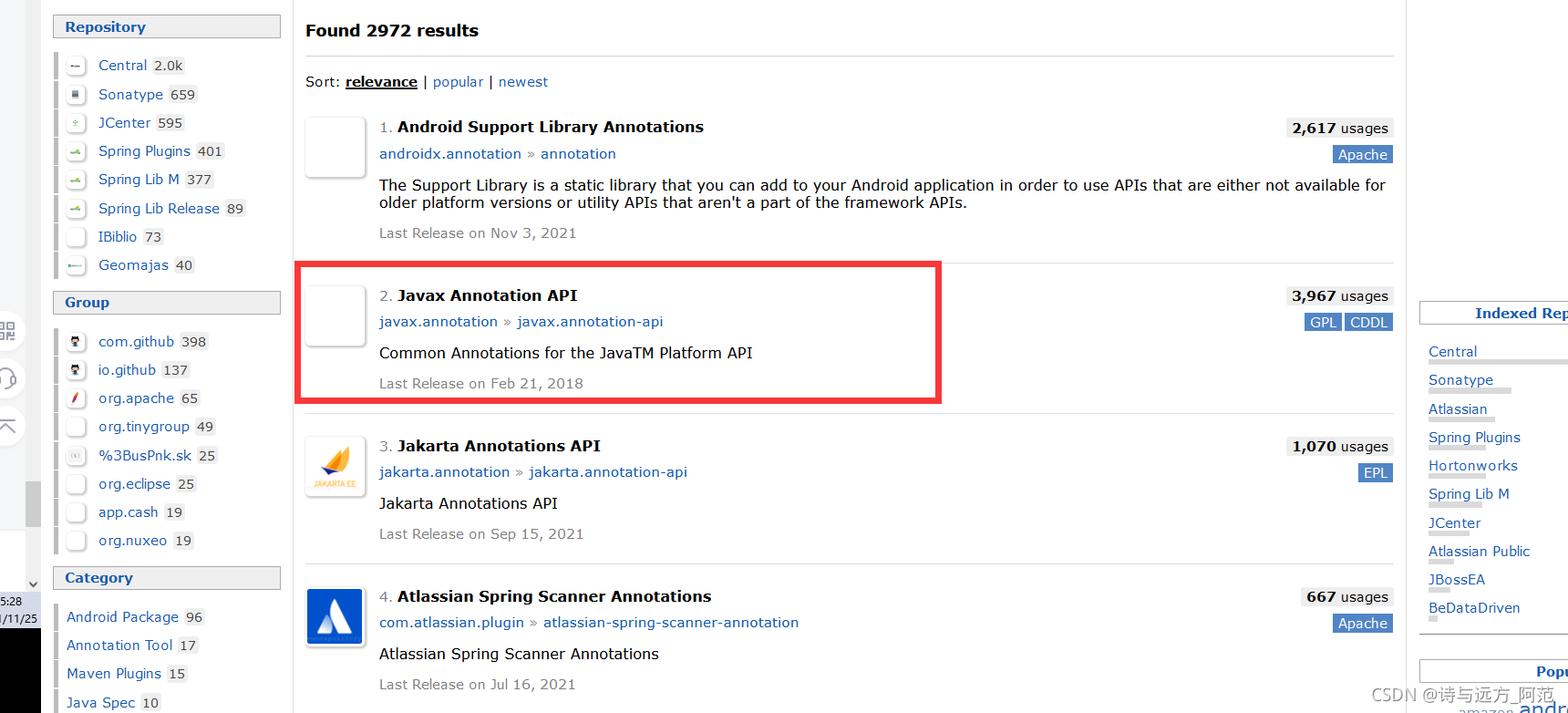1、Spring简介
Spring框架是由于软件开发的复杂性而创建的。Spring使用的是基本的JavaBean来完成以前只可能由EJB完成的事情。然而,Spring的用途不仅仅限于服务器端的开发。从简单性、可测试性和松耦合性角度而言,绝大部分Java应用都可以从Spring中受益。
目的:解决企业级的开发复杂性问题。
功能:使用的是基本的JavaBean来完成以前只可能由EJB(sun公司提出的 JAVAEE解决方案)完成的事情,Spring 提供了更多的功能。
范围:任何的JAVA 应用
官网:Spring | Home
2、Spring 组成

IOC:Inversion of Control,控制反转。依赖注入(DI)。将对象的创建权交给了Spring。
正常的操作:是通过new创建对象,然后对象之间互相调用。
反转:是将创建对象交给Spring容器,组件化的思想,使用接口,不再关注实现。
3、IOC的实现
IOC通过spring有二种实现方式:(1)Xml配置 (2)注解
方式一(XML配置):
步骤1:在resource文件,创建一个spring的配置文件


步骤二:创建实体类,spring是通过无参构造创建对象,set方式注入
Student类:
package com.fan.pojo;
public class Student {
private String name;
private int age;
private School school;
public Student() {
System.out.println("Student无参数构造!");
}
public String getName() {
return name;
}
public void setName(String name) {
this.name = name;
}
public int getAge() {
return age;
}
public void setAge(int age) {
this.age = age;
}
public School getSchool() {
return school;
}
public void setSchool(School school) {
this.school = school;
}
@Override
public String toString() {
return "Student{" +
"name='" + name + '\'' +
", age=" + age +
", school=" + school +
'}';
}
}
School类:
package com.fan.pojo;
public class School {
private String name;
private String address;
public School() {
System.out.println("school的无参构造!");
}
public String getName() {
return name;
}
public void setName(String name) {
this.name = name;
}
public String getAddress() {
return address;
}
public void setAddress(String address) {
this.address = address;
}
@Override
public String toString() {
return "School{" +
"name='" + name + '\'' +
", address='" + address + '\'' +
'}';
}
}
引用类型的属性,需要ref属性,其中xml配置文件如下:
<?xml version="1.0" encoding="UTF-8"?>
<beans xmlns="http://www.springframework.org/schema/beans"
xmlns:xsi="http://www.w3.org/2001/XMLSchema-instance"
xsi:schemaLocation="http://www.springframework.org/schema/beans http://www.springframework.org/schema/beans/spring-beans.xsd http://www.springframework.org/schema/context https://www.springframework.org/schema/context/spring-context.xsd">
<bean id="myStudent" class="com.fan.pojo.Student">
<property name="name" value="李四"/>
<property name="age" value="18"/>
<property name="school" ref="mySchool"/>
</bean>
<bean id="mySchool" class="com.fan.pojo.School">
<property name="name" value="航空大学"/>
<property name="address" value="北京海淀区"/>
</bean>
</beans>测试类:
package com.fan;
import com.fan.pojo.Student;
import org.junit.Test;
import org.springframework.context.ApplicationContext;
import org.springframework.context.support.ClassPathXmlApplicationContext;
public class MyTest {
@Test
public void test01(){
String config="applicationContext.xml";
ApplicationContext ctx = new ClassPathXmlApplicationContext(config);
Student student = (Student) ctx.getBean("myStudent");
System.out.println(student);
}
}
结果显示:

方式二(注解):
Student类:
package com.fan.pojo;
import org.springframework.beans.factory.annotation.Autowired;
import org.springframework.beans.factory.annotation.Qualifier;
import org.springframework.beans.factory.annotation.Value;
import org.springframework.stereotype.Component;
import javax.annotation.Resource;
/*
@Component:表示创建对象,对象放在容器中。作用是<bean>
value:类似于bean的id属性值
位置:在类的上面,表示创建此类的对象
*/
@Component("myStudent2")
public class Student {
@Value("${myName}")
private String name;
@Value("${myAge}")
private int age;
/*引用类型 @Autowired 自动注入原理 支持byName、byType 默认是byTpye
采用byName
@Autowired
@Qualifier(value = "mySchool123")*/
/*
@Resource 来自jdk中,给引用类型赋值,支持byName、byType 默认是byName
spring支持这个注解
位置:属性定义上面,无需set方法,推荐使用
在set方法的上面
*/
//先使用byName赋值,如果赋值失败,则用byType
@Resource(name = "mySchool")
private School school;
public Student() {
System.out.println("无参数构造!");
}
@Override
public String toString() {
return "Student{" +
"name='" + name + '\'' +
", age=" + age +
", school=" + school +
'}';
}
}
school类:
package com.fan.pojo;
import org.springframework.beans.factory.annotation.Value;
import org.springframework.stereotype.Component;
@Component("mySchool")
public class School {
@Value("asa航空大学")
private String name;
@Value("北京海淀区")
private String address;
@Override
public String toString() {
return "School{" +
"name='" + name + '\'' +
", address='" + address + '\'' +
'}';
}
}
properties:

xml配置文件:
<?xml version="1.0" encoding="UTF-8"?>
<beans xmlns="http://www.springframework.org/schema/beans"
xmlns:xsi="http://www.w3.org/2001/XMLSchema-instance"
xmlns:context="http://www.springframework.org/schema/context"
xsi:schemaLocation="http://www.springframework.org/schema/beans http://www.springframework.org/schema/beans/spring-beans.xsd http://www.springframework.org/schema/context https://www.springframework.org/schema/context/spring-context.xsd">
<!--声明组件扫描器:使用注解必须加入这个语句
component-scan:翻译过来是组件扫描器,组件是java对象
属性:base-package注解在你的项目中的包名
-->
<context:component-scan base-package="com.fan.*"/>
<!--读取外部的属性配置文件
property-placeholder:读取properties这样的文件
-->
<context:property-placeholder location="classpath:/myconf.properties" file-encoding="utf-8"/>
</beans>测试类:
package com.fan;
import com.fan.pojo.Student;
import org.junit.Test;
import org.springframework.context.ApplicationContext;
import org.springframework.context.support.ClassPathXmlApplicationContext;
public class MyTest {
@Test
public void test01(){
String config="applicationContext.xml";
ApplicationContext ctx= new ClassPathXmlApplicationContext(config);
Student student = (Student) ctx.getBean("myStudent2");
System.out.println(student);
}
}
结果图:

4、总结
























 238
238











 被折叠的 条评论
为什么被折叠?
被折叠的 条评论
为什么被折叠?








